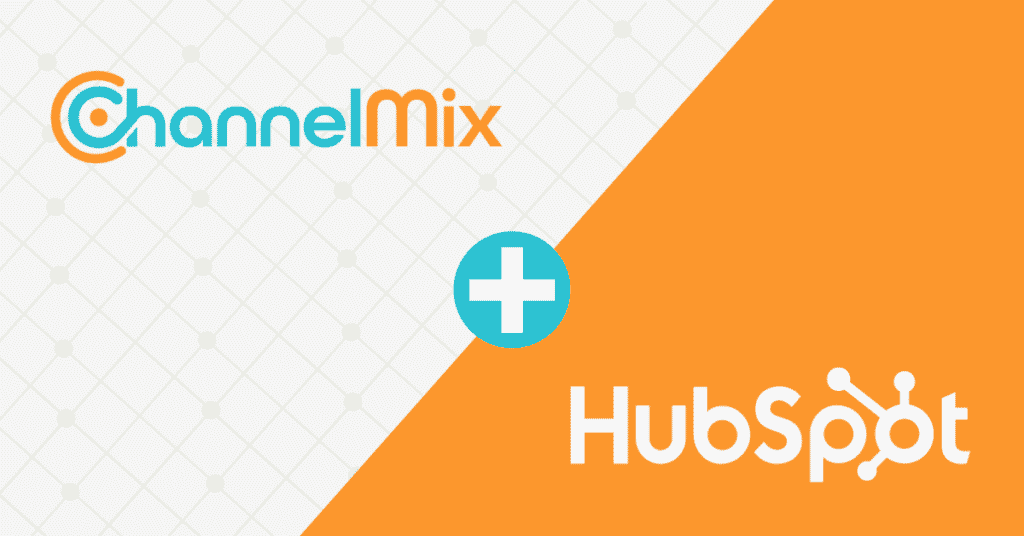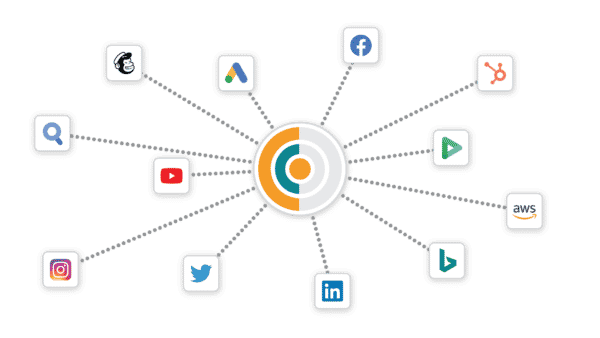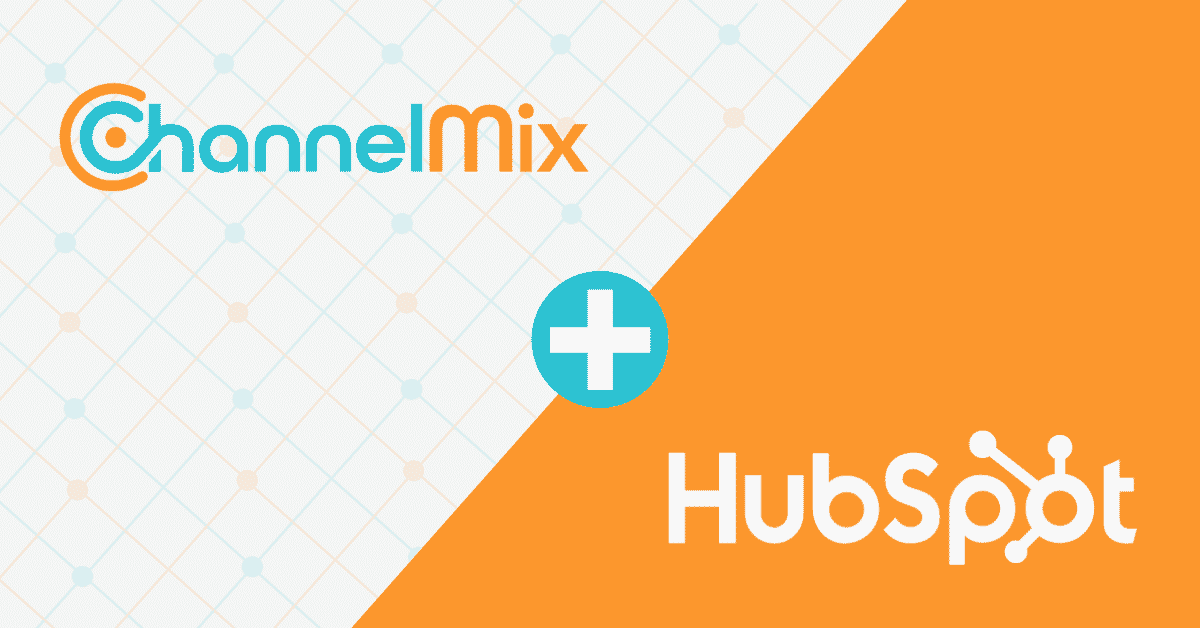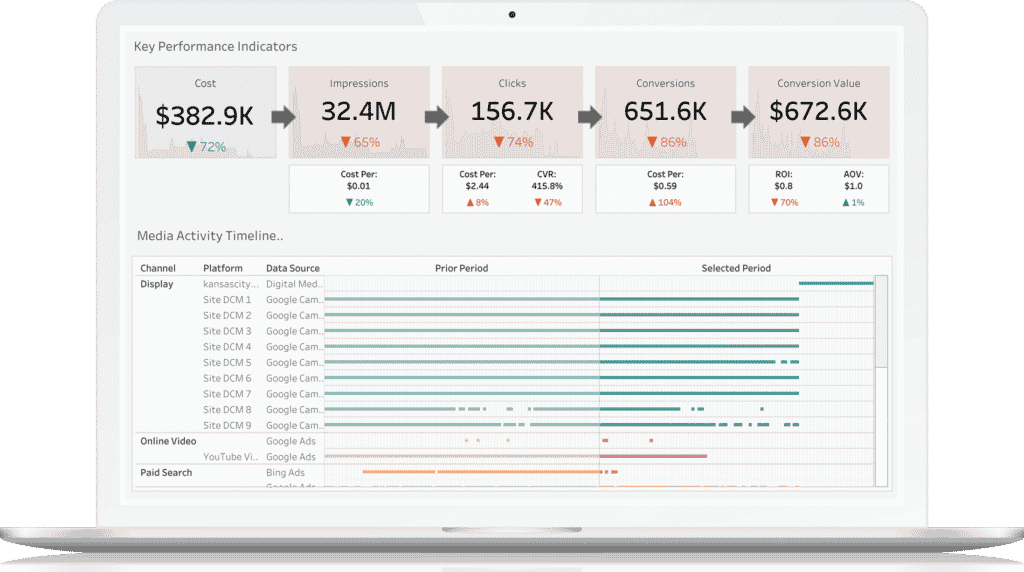
HubSpot is one of the world’s leading CRMs for a reason — it’s an incredibly useful platform for attracting, engaging and retaining customers. At Alight, we actually use it for our marketing campaigns.
But HubSpot isn’t built for marketing analytics. ChannelMix, Alight’s marketing intelligence platform, is.
Does HubSpot have reporting tools? Yes, but they aren’t capable of producing the detailed reporting and insights that many marketers need to measure performance and optimize strategy.
So if you’re a midsize or larger company, or if you’re employing multiple online and offline channels to reach your audiences, HubSpot probably won’t be the right solution. Here are a few reasons why.
ChannelMix brings all your data together in one place — HubSpot can’t

Unlike ChannelMix, Alight’s marketing analytics platform, HubSpot can ingest marketing performance data from a limited number of digital platforms.
HubSpot only reports on performance data from a few organic social sources, like Facebook, Twitter, Instagram, LinkedIn and (for clients with a Marketing Hub Enterprise subscription) YouTube. It can also collect ad performance data from Facebook Ads, Google Ads and LinkedIn Ads.
In fact, in the marketing analytics landscape ecosystem of marketing analytics vendors and tools, HubSpot is one source of many for ChannelMix, whereas HubSpot reports can only be a destination for a limited number of integrations.
In other words, HubSpot was not designed as a data warehouse capable of supporting complex queries and analytics. ChannelMix, on the other hand, can integrate your HubSpot data with all the other data in your sales and marketing ecosystem to create a single source of truth.
Several popular data sources aren’t available.
HubSpot is missing direct connections with popular platforms like TikTok, Reddit, Pinterest and SnapChat. Even for the sources it does support, reporting isn’t always as clear or complete as it needs to be. Some ad types, for example, can’t be imported.
HubSpot can show you if some of these other channels were the source of traffic to your HubSpot landing pages and blogs. But in most cases, you won’t get any performance data from those platforms. To get a holistic view of how all of your paid and organic marketing efforts are doing, you would have to go to each platform’s reporting tool for that.
And even when HubSpot knows the source of your web traffic or leads, you’re not going to be able to get a side-by-side look at the amount of impressions, interactions and, importantly, spend it took to generate that traffic or lead.
HubSpot doesn’t support true cross-channel reporting and analytics.
That’s a problem for any marketer with a multi-channel approach to campaigns. To make sure you’re using the most effective tactics, you need to measure performance at each step in your funnel — from awareness to lead to sale — and be able to compare them to other channels and platforms.
ChannelMix solves this problem by creating a single source of truth for your marketing data. The platform can collect data from essentially any marketing, media or sales platform, including HubSpot.
Then ChannelMix combines data from all those sources into a single OneView dataset. All the metrics are normalized across sources, so you can see how an entire channel (such as paid search or organic social) performs or make more granular comparisons between specific platforms like Facebook or Twitter.
Reporting is not customizable or flexible
You can’t customize your reporting in HubSpot the way you could with a dedicated dashboard tool like Tableau or Power BI. Everything is organized how HubSpot wants you to track and measure things. That lack of flexibility can really make a difference when you try to compare ad platforms or conversion goals.
ChannelMix shows your entire marketing and sales pipeline in one view — HubSpot won’t
Want to see how marketing spend impacts each stage of your funnel, from impressions to leads to sales opportunities to customers? With conversion rates and “cost per” KPIs for each stage?
HubSpot doesn’t have a report that will show you that. Even if you subscribe to the Marketing Hub and the Sales Hub, there are limitations to what data you can actually combine and view together in one report.
But ChannelMix can help. Several of our dashboards feature a pipeline view that maps to your exact marketing and sales funnel, so you have a holistic report with every stage and “between the box” metric you need.
HubSpot’s Campaign tool has two big blind spots
The Campaign report only includes digital channels as traffic sources.
Direct mail, TV, events and other offline media won’t be included if they are part of your campaign. For some marketing teams, that could mean overlooking some of the most effective channels they have for reaching customers and prospects.
ChannelMix has the ability to include data from essentially any media source and associate it with specific campaigns, letting you see how offline and online marketing work together to drive results.
HubSpot doesn’t offer campaign pacing.
While you can include information about goals, budget and other metadata for your Campaigns, you can’t actually incorporate them into a pacing dashboard that shows how much progress you have made toward this quarter’s goals and how much budget you have left to reach them.
With Alight, you can use our pacing dashboard to keep a constant watch on campaign progress.
HubSpot’s marketing attribution doesn’t show you the whole story — ChannelMix does
HubSpot offers several rule-based attribution models, including first touch, last touch, time decay and others. It can show you which media channels originated a contact or deal.
But HubSpot attribution doesn’t incorporate media performance data like spend, impressions and clicks, it can’t accurately calculate ROI for those media channels. You don’t get a sense of whether those media channels were cost effective.
ChannelMix collects data from all those source systems, so you get the complete story.
ChannelMix supports more advanced forms of analysis — HubSpot can’t
HubSpot doesn’t offer data-driven marketing attribution.
So when it gives credit for a conversion activity, HubSpot’s models only look at converting paths — a chain of customer interactions that led to a sale or some other desired activity.
To determine conversion value, data-driven models look at converting and non-converting paths — interactions that don’t actually lead to a conversion.
By including non-converting paths, you can get a more accurate read on a channel’s effectiveness.
HubSpot doesn’t offer marketing mix modeling.
Marketing mix modeling uses historical impression, spend and conversion data to predict which channels you should invest in for upcoming campaigns.
It’s an incredibly useful tool for planning campaigns. HubSpot doesn’t offer it, at all.
Alight’s dashboards feature built-in marketing mix models that anyone can use to run test scenarios and predict ROI.
HubSpot Wasn’t Built for This
HubSpot wasn’t really designed to be a long-term analytics platform, the same way that other automation and CRM tools like Marketo and Salesforce weren’t designed that way.
They can report on part of your marketing investment. But they can’t give you the visibility you need to measure the effectiveness of complex campaigns that use a variety of platforms and vendors, both online and off.
If you’re using other channels than just email, Google Ads and social, you’re going to need a dedicated analytics solution to bring it all together.
Request Your Demo Today
Discover how Alight’s end-to-end analytics solutions help marketers get the insights they need to make better decisions faster. Schedule a demo with our team!




